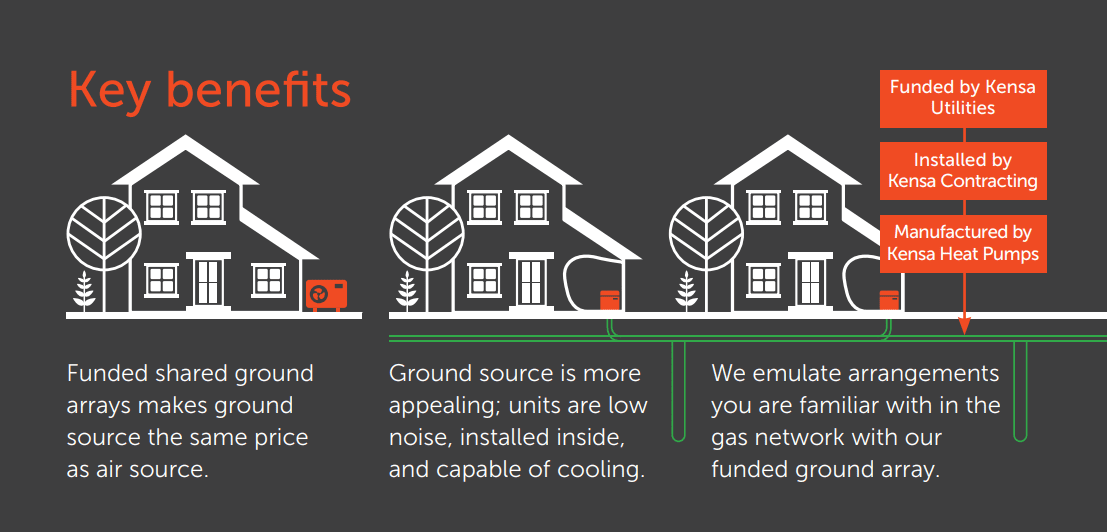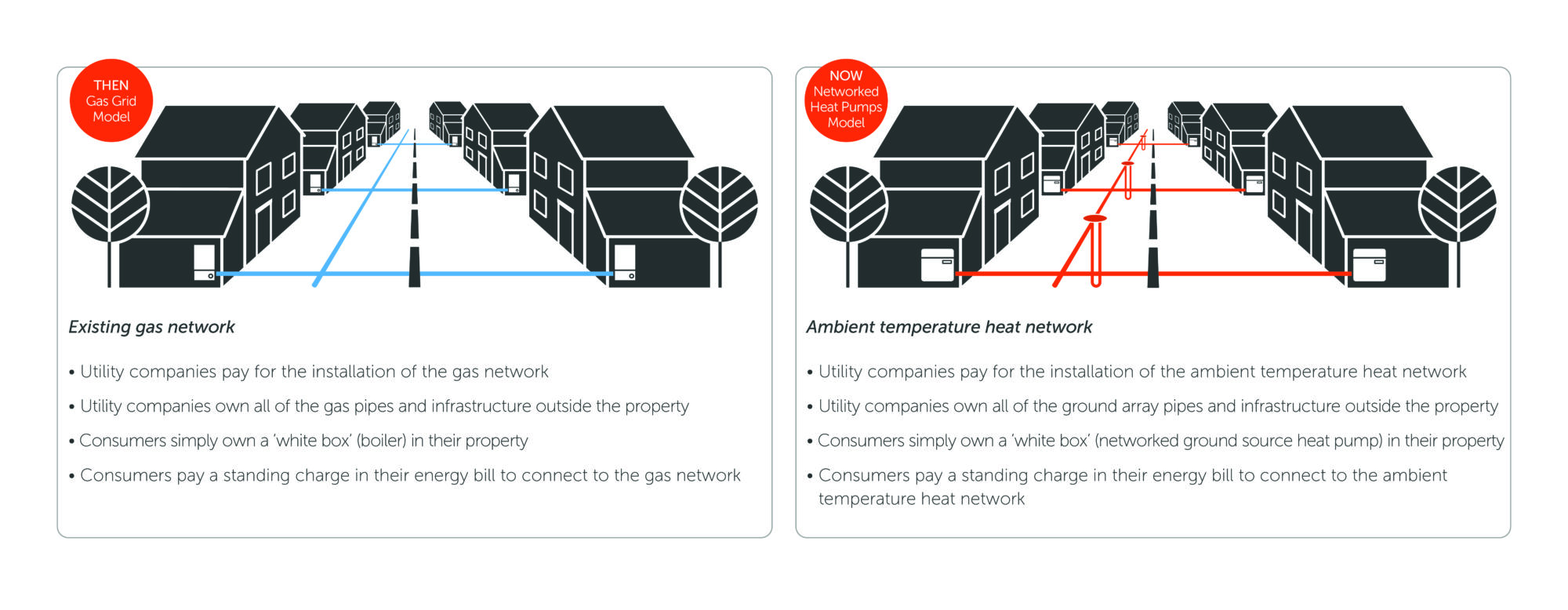Kensa’s funded arrays enable house builders and developers to install ground source heat pumps for the price of air source heat pumps.
Funding
Funded Arrays
Funded arrays enable house builders and developers to install ground source heat pumps for the price of air source heat pumps.
Kensa Contracting manage projects end to end, and Kensa Utilities will fund, own and maintain the shared ground array on your site, leaving the developer / social landlord / non-domestic customer responsible for only providing the heat pump and internal distribution system.
Each property will pay a monthly standing charge to access the shared ground array for a minimum of 40 years, just like any traditional utility.
This emulates the current gas grid and means that housebuilders and homeowners can reap the unique benefits of harnessing underground heat to keep their houses warm, provide hot water and even cooling.
The addition of an energy-efficient and low-carbon ground source heat pump will increase the value and saleability of a newbuild property.
Find out more about Funded ArraysFunded Ground Array Offer Flyer
Download Kensa Contracting’s Flyer which outlines our finance offer for networked heat pump asset infrastructure.
Take a look at our flyer about Funded ArraysZERO
ZERO enables local authorities or social housing providers managing housing stocks exceeding 3,000 units to undertake comprehensive retrofitting across their entire portfolio without incurring upfront costs.
This unique opportunity enables the systematic retrofitting of a diverse range of properties over several years. Leveraging our advanced tools, Kensa ensures a tailored solution for each property within your housing portfolio.
Through a strategically prioritised construction program spanning 3-5 years, Kensa supports your net-zero commitments, providing impactful and sustainable outcomes. Our commitment extends over a 30-40-year period, encompassing maintenance and replacement services, resulting in significant savings for the Housing Revenue Account (HRA).
Beyond the immediate benefits to housing portfolios, ZERO generates widespread local advantages. For instance, a deployment of 5,000 homes on the ZERO platform injects approximately £5 million annually into the local economy, with additional economic multipliers stemming from increased spending and development.
Find out moreZERO Flyer
Download Kensa Contracting’s Flyer which outlines our finance offer for networked heat pump asset infrastructure.
Take a look at our flyer about ZEROFuture Homes Standard
The funded array offer allows housebuilders and developers to meet the Future Homes Standard for the lowest cost.
Meet Part L and Part O of Building Regulations with the funded ground array.
Benefits of Funded Arrays
- Meet Part L & O, and Future Homes Standard
- No visual impact
- Lowest substation upgrade cost
- Lowest carbon
- Greenest, safest, cheapest
- Protection against rising heat bills
- Familiarity with standing charge from gas
- Consumer protection via Heat Trust

Suitable for
- New Build
- Retrofit
- Non- Domestic
Kensa Utilities
Kensa is a collection of award-winning businesses that manufacture and install networked ground source heat pumps and provide the finance for networked heat pump asset infrastructure. Together, they bring a groundbreaking solution for the lowest cost route to compliance and the ideal heating and cooling solution for your customers.
Kensa Utilities is an infrastructure asset company that funds, owns and maintains Kensa Shared Ground Loop Arrays that serve ground source heat pump installations.
Visit Kensautilities.com
